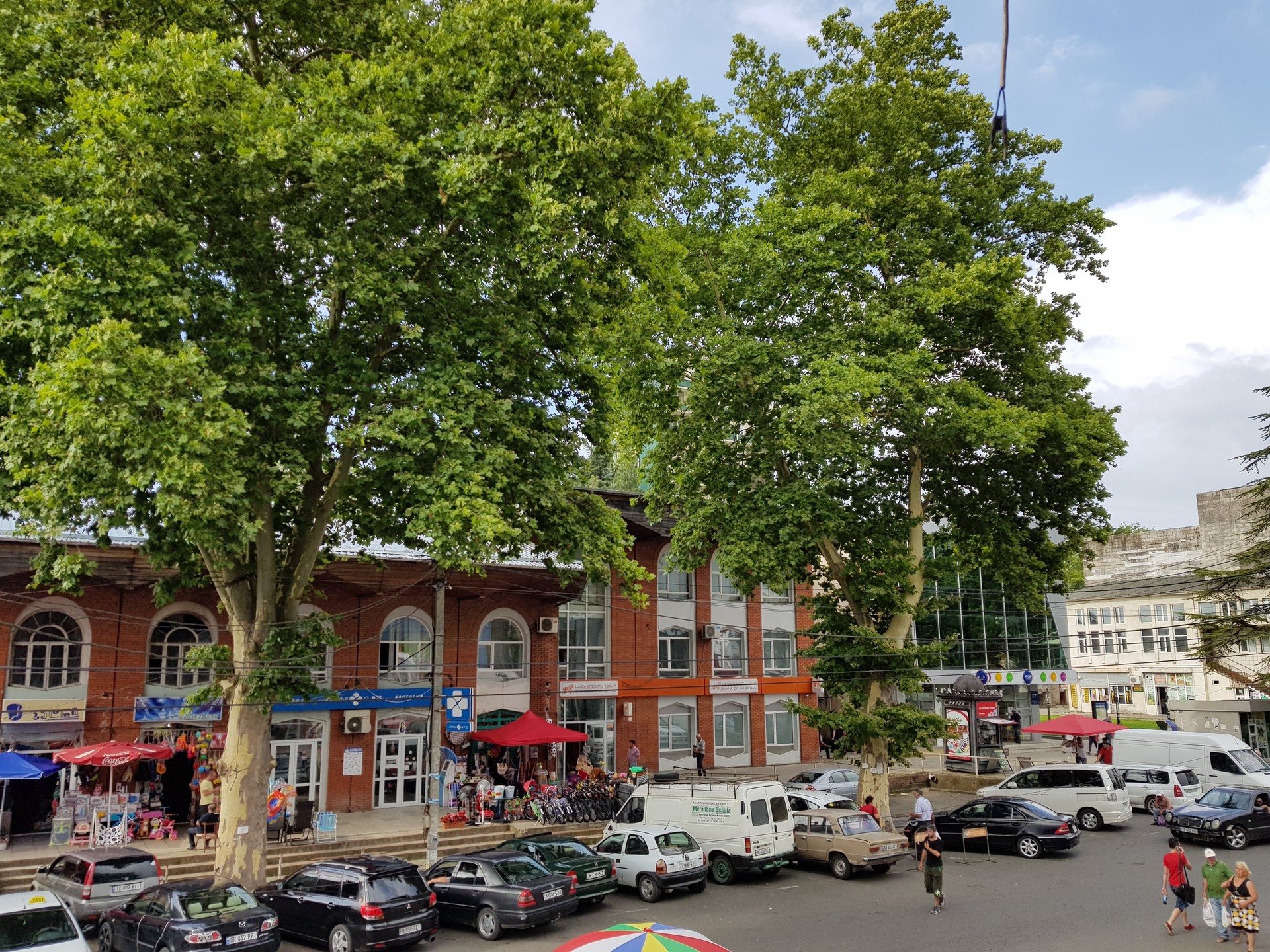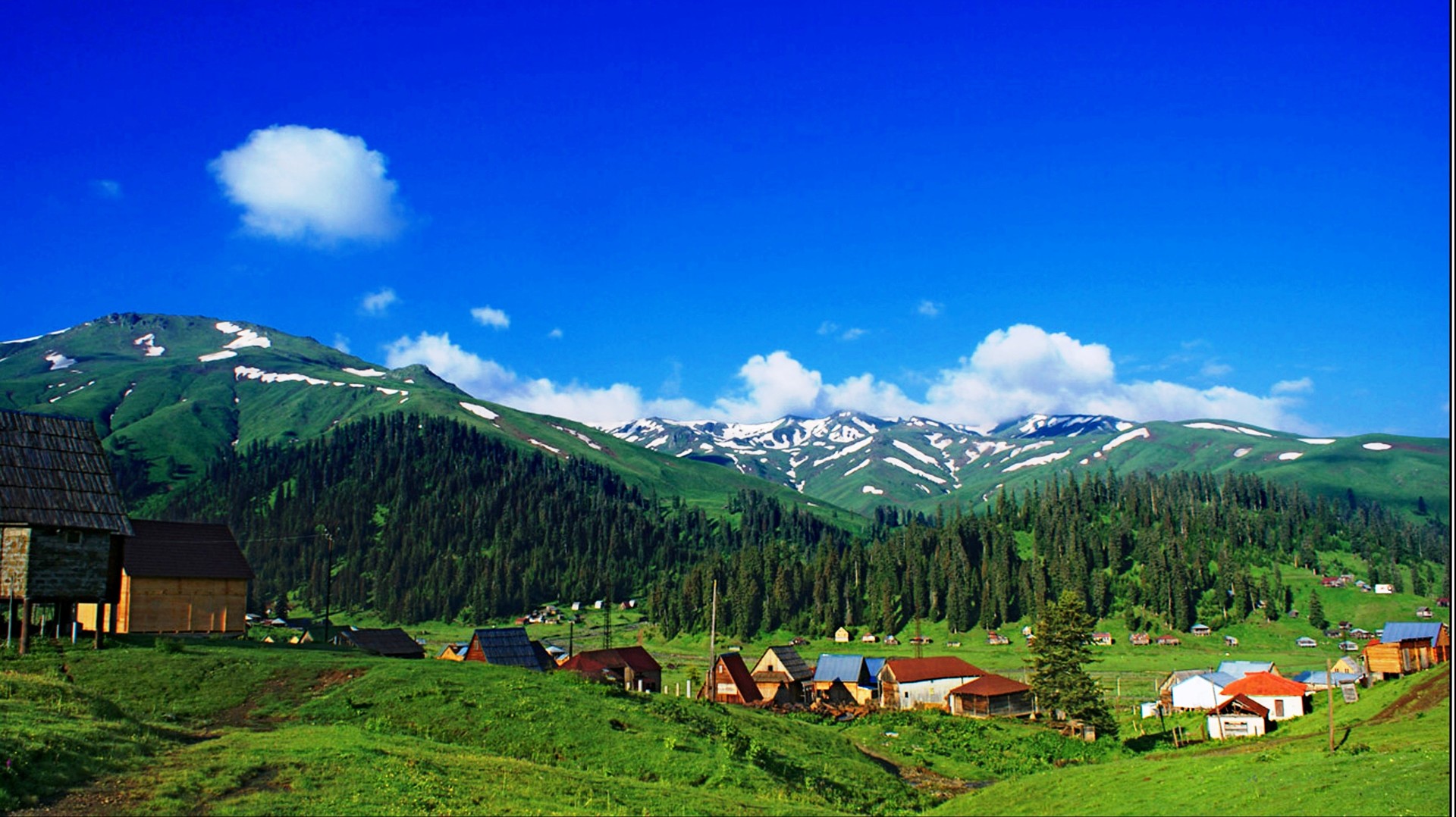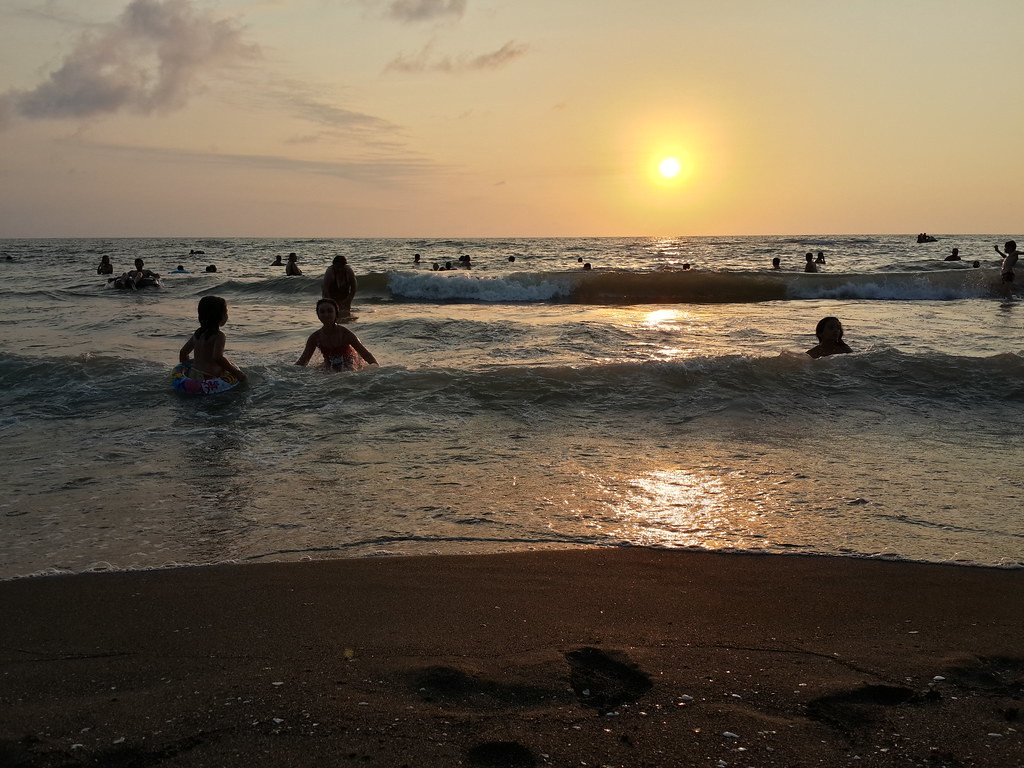Amazing Guria & Its People
Hello everyone, I hope you are all doing well. It's been a couple of days since I have written my last article here. I have thought that today I could start with another important and beautiful place in Georgia called Guria. Guria is a region found in the western part of Georgia and it's bordered by the Black Sea. Although this region is not an amazing tourist spot in Georgia, the Guria region is well known for its very hospitable people with a good sense of humor. It is also known for its polyphonic music and, besides, Guria has its own customs and traditions filled with natural beauty. On the whole, the region of Guria offers its visitors a trip that is beyond sightseeing.

Reaching Guria is not that complicated, as it is connected with the major cities of Georgia through roadways and railways. In the country's capital, Tbilisi, mini vans or marshrutkas depart from various bus stations like Vukzali bus station, Orthachala bus station, or Didube bus station. Minibuses leave from Tbilisi to Ozurgeti, Lanchkhuti and Ureki, out of which Ozurgeti is the capital of the Guria region. Buses also leave from some other important cities like Bakuriani, Kutaisi, Gori, etc. Trains depart daily from the Tbilisi Central Railway Station to Ozurgeti.
The geography of Guria is spectacular with its northern part located in the colchian lowlands. Colchis, as we know from previous articles, was the ruler of the current Megrelian in the past. The region of Guria extends to the south, bordered by Meskheti Mountain Range. Taking these natural boundaries into account, we can catecogorize the borders of the Guria region as the Samegrelo in the north, Imereti in the east, Samtskhe - Javakheti in the south east, Adjara in the south and the Black Sea on the west.
As we move towards the east the lowlands in this region become mountains, and the evergreen forests are in turn replaced by the swamp forests. On the eastern side of these mountains beach forests are generally found, while in higher altitudes predominate trees such as the pine or the fir.

In the Gurian mountains, you can find some rare varities of its flora and fauna. The mountain forests serves as a home to a large number of wild animals like bears, wolves, deers, martens, bobcats and many more. There is also a variety of birds which are found in these forests such as cuckoos, hoopoes, hawks, woodcocks, falcons, etc. There are also many rivers flowing down the region of Guria. These abundant fresh water sources serve as a home to many types of fishes like the lamprey, the sheatfish, the perch, the trout and the gudgeon.
The region of Guria has a subtropical climate both on the seashore and in the mountain area. The lowlands are located 200 metres above sea level and moreover, there is a high influx of winds. Unlike other parts of Georgia, the Gurian Region has a mild winter and a hot summer. Therefore, you may not experience the freezing conditions of the great caucasian range.
After having a look at all these geographical and climatic data of the Gurian region, I guess, that now it's time see its history. Historical facts say, that during the middle ages the region of Guria existed separately. In the initial period the region was called Saeristavo or The Fiefdom. The region of Saeristavo was governed at that time by a family of Gurian rulers. In the mid 19th century, Guria existed as a sovereign independent principality called Samtavro.
In modern times, archeological excavations in these areas have discovered artifacts that strongly suggest that there was a well known civilization many centuries ago. It is said, that in the 13th century, a large amount of Colchians lived in this area. During the 6th and 7th century, there was a strong and independent Georgian state called the Colchis Kingdom. The place where the Golden Fleece was preserved. There is a famous Greek myth about it, and I have described the entire story in my article dealing with Samegrelo. The territory around Ureki is of big importance due to its archeology. The remains of ancient burial mounds are also found in the seashore of the black sea. Apart from all these archeological findings, they have also discovered roman coins and garnet buttons that belong to the 3rd and 4th centuries.
The people of Guria follow their culture and tradition very strictly. They have a rich spiritual and family culture. The people of this region are known for their politeness and respect to the elderly. Guria is also very famous for its singing and music, which play a vital part in the Gurian culture. The Gurians were the people who helped to develop the world famous Georgian Polyphonic singing. The Gurian songs generally consists of three or four independent melodies. "Krimanchuli", which literally means "twisted iron", and is the best example of Georgian polyphonic traditions. "Naduri" is a special kind of song that is sung during grape harvest or while working on the field. Singing a Naduri is actually a complex process. It takes more than an hour to conclude a Naduri, and more than 200 people should sing it together.
The major occupation of the people of Guria is agriculture. The most important crops cultivated in this region are: citrus fruits, tea, nuts, grapes, corn, etc. Like in any other part of Georgia, the cradle of wine production in Georgia has dated back to antique times.
As told before, Guria is a region that is rich with customs and traditions. People celebrate public rituals and traditions in a grand manner. Some of the biggest celebrations are Giorgoba or Saint George's day; Mariamoba or Saint Mary's day; Kalanda or New Year. Each family does some special arrangements during these festivals. For the new year, the Gurian people place a nut tree which they call to be a "Tree of Life", in Georgian language it is called Chichilaki. It is considered to be as a sign of wealth and fertility and it is kept in their home until the Baptism day that is on january 19th, after which they throw it into the water or burn it down. Apart from thei major occupation of agriculture, the Gurian people are also known for their craft works, building skills, leatherworks, saddles, basket making, straw hat making, etc. Hunting and fishing also form part of the Gurian culture.
They are also known for their horse riding skills. The Gurians are excellent horse riders. They used to take part together in horseriding games locally called Isindi. Playing this game requires a very high professionalism in horse riding and physical strength. Generally, from 12 to 20 players play together in the same arena. The players will hold in their hand 1. 5 meters long spears, and everytime that a player touches another player's horse or the person himself, this player recieves winning points. The winner of the game is well respected, and the end is followed by a grand feast where they sing polyphonic music, and make funny jokes and toasts for enjoyment.
During the 1880's, Gurian horse riders recieved world wide recognition. They travelled to Europe and America where they participated in Buffalo Bill Wild West Show. These riders came from all levels of society, and they travelled numerous times to these western countries where they even sang georgian polyphonic songs and exhibited their riding skills. The Queen of England, Victoria, witnessed these events once and gave them a letter of gratitude.
The people of Guria are very hospitable and their guests recieve a warm feast with dishes containing mostly walnuts and hazelnuts, thereby bringing a different flavour to the food. Some of the regional special foods are Satisivi- chicken served cold in walnut sauce, Ghomi- a corn dish similar to grits served with cheese, Gurian Kachapuri - cheese bread stuffed with hard boiled eggs, Kharcho - a hot meat stew, Mtsvadi- marinated beef or pork grilled over an open fire, Pkhali - ground spinach mixed with nuts and spices and Chiri- dry fruits. These are some of the special dishes that are mostly found throughout Georgia, but flavours vary in the different regions.
Ozurgeti Historical Museum, which is located in Ozurgeti, the capital of Guria, has a rich collection of archeaological treasures that belong to the Neolithic period, early, middle and late Bronze Ages. Segments of Colchian axes, rare bronze sculptures, and golden antiques were found. There is even a fine currency collection including colchian tetri, turkish coins, money from the soviet period, etc. It also houses in some of the 19th century documents, official seals, coats of armor, flags, fine art, antique books, and the most important, a sword of Napoleon.
Niko Berdzenishvili Chokhatauri Local Museum has lots of archealogical collections dating back to 7th century including colchian axes, hoes, spear heads, materials from an ancient tomb, various beads, bracelets, earrings, crockery, etc. Even this museum also has a currency collection including the Turkish currency, 19th century money from Germany, Spain, France and Russia. It has some ancient weaponry from 18th and 19th century like engraved silver swords, daggers and rifles. Ethnographic items from the 19th century like crockery, furniture and implements are kept for the visitors to see. The museum also has a library containing Georgian, Russian and French books, and handwritings of some famous poets, well known public figures, etc.
The Church Of Archangels Of Jumati
The Church of Archangels of Jumati is a monastery complex located near a place called Lanchkhuti. A medieval temple in the monastery was painted from the 16th to 18th century. This church is usually the residence of the Archbishop of Guria.
Askana Temple was constructed in several different times, and therefore it has several layers of construction. The first layer was dated back to early feudal period and the newest was progressively built in the 19th century.
Shemokmedi Monastery Complex was one of the biggest monastery during the middle ages. This monastery is situated in the main city of Guria, Ozurgeti. The temple of the monastery has a very rich library with some golden engravings. Shemokmedi monastery complex therefore served as a residence for the archbishop of Guria and also the burial ground for noble people. The second temple of the church is said to be constructed in the 16th century. The church is known for its dome which was built by Vakhtang. An interesting feature of the dome is that an icon was brought by the king from the Zarzma monastery, and thereby it is called Zarzma.
Apart from all these important architectural structures, there are also other monuments such Gurieli Church, Gurieli palace, the artificial caves of Khoreti and Gaguri, Bukistsikhe Castle, Goraberejouli castle and church that stands from 17th century, Upper Erketi Church and the Udabno Monastery Complex.
Guria is not only culture, tradition and historical monuments. It also has some important resorts; two of which I have mentioned here:
- Ureki is a health resort located in the shore of the Black Sea. The resort is famous for its magnetic sand beaches which are incomparable to any others in the world. The health benefits of the magnetic beaches are well known since the time of the Egyptians, Greeks and also Indian saints, who mentioned its healthy benefits. Magnetic energy has anti-inflammatory and painkilling properties, it stimulates the regeneration of tissues, strengthens the immune system and also improves conditions of several diseases.
- One of the best mountain resorts in Georgia is in Guria in a village called Bakkhmaro. It is located in the district of Chokhatauri on the Meskheti mountain range. The resort is place on the gorge of the river called Bakhvistskali river. It is 2000 metre above sea level and known for its fresh air which has a mixture of mountain and sea air resulting in a unique local climate. Bakhmaro is recommended for those who have health problems.

Nabeghlavi is actually a spring water source, whose mineral water is bottled and famous in many countries. It is also present in the district of Chokhatauri.
After reading all these facts about Guria, I guess, one could understand that Guria is a place to sightseeing, learning some Georgian culture and traditions, hearing some classic polyphonic Georgian music and refresh our body with some naturally occuring springs and magnetic sand beach shores.
Until I write my next article, cheers and keep smiling. Please do leave a comment below if you find any kind of mistake in my writing or if you have any suggestions so that I can improve myself in my forthcoming writings. Thank you..!
Photo gallery
Content available in other languages
- Español: La increíble Guria y su gente
- Italiano: L'incredibile Guria e i suoi abitanti
Guria, Georgia
Dear Manoj
My name is Marisa Gurian. I am a Brazilian retired teacher and it has been a long time since I first started searching for my historical roots. As you may have noticed, my maiden surname is Gurian, but there aren't many people with this family name here in Brazil and, unfortunately, none of those I've made contact with could tell me anything about our ancestors.
I learned some time ago about the region of Guria, in Georgia, from an American named David Gurian. He told me that his greatgrandparents went to the USA, using Polish passports and he was the first to tell me about the Principality of Guria. In fact, he was under the impression that his ancestors had fled from there and he could not explain why they use Gurian as a surname.
As far as I know, my greatgrandparent, Bortolo Gurian, came to Brazil from Italy. I didn't have the chance to know him and my grandparents just said that they were Italian descendants, thought I'm quite sure that their parents had only Italian documents. I am an Italian descendant from my mother's side of the family and I'm quite sure that they were completely different in the way of using Portuguese language, their traditions, etc. although I deeply loved all of them. I was especially linked to my grandfather, João Guido Gurian, but he died when I as only 10 years old.
I enjoyed a lot your article about Guria and Georgia and I was wondering if you could help me learn more about these places, as well as help me to understand why all of us have this surname (I am very proud of it!) since it sounds more as a nationality adjective than a family name. Do you know if all immigrants from there did the same (use the name of their original birthplace as their family name)?
Yours sincerely,
Marisa
Content available in other languages
- Español: Guria, Georgia
Rate and comment about this place!
Do you know Guria, Georgia? Share your opinion about this place.

















